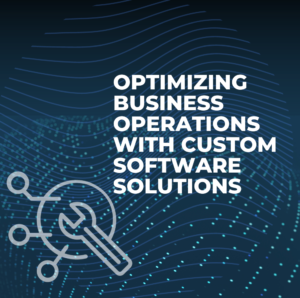Before we dive into the world of Linux, let’s take a quick trip back to understand what an Operating System (OS) really is.
An operating system (os) is a collection of software that controls computer hardware resources and provides common functions to computer programs.
The operating system is the most critical piece of system software in a computer system.
OS is system software that manages computer hardware, software resources and provide common services for computer or you can say like this it manages all the resources of the computer. An operating system serves as an interface between software and various computer components or hardware. The operating system is meant to manage all of the computer’s resources and functions.
- Hardware(Motherboard, RAM, Processor, Hard disk etc)
- Memory Management
- Managing multitasking
- Managing multiple users
- Process management
- Device management
- Error handling and logging.
Operating systems include Windows, Linux, and macOS.
A Brief History of Linux
Linux is a free and open-source operating system family that is both durable and adaptable. In 1991 , Linus Torvalds, the creator of Linux, wrote his own Unix-like operating system. Linus wrote the kernel of Linux. The system’s source code is available for everyone to view and modify, making it cool that anyone can see how the system works. Because of Linux’s open source nature, people all around the world are encouraged to collaborate and continue improving it. Since its inception, Linux has evolved into a robust and secure operating system that is used in a wide range of devices, including personal computers, mobile phones, and massive supercomputers. It is well-known for being cost-effective, which means that it is inexpensive to hire, and efficient, which means it can do a large number of tasks rapidly. Many individuals enjoy Linux.
What is the Linux kernel?

The Linux kernel is crucial to the Linux operating system. The kernel is the primary link between a computer’s hardware and its programs. It ensures that there is enough memory for Linux applications to execute, optimises processors, and navigates system requirements among applications.
The Linux kernel communicates with the hardware and software via “interrupts.” When the hardware wishes to communicate with the program and the larger system, an interrupt is sent across the processor and kernel to efficiently manage resources.
The kernel, which exists behind a hard OS shell, controls the primary tasks of the appropriate hardware, regardless of the device type, such as mobile, tablet, desktop or laptop, server, and so on. The Linux kernel focusses on the following important functions:
- Memory management: entails keeping track of how much memory to utilise and how.
- Process management: is determining which processes and how they can use the central processing unit (CPU).
- Device Drivers: Act as a bridge between hardware and applications/processes.
- System Calls and Security: Receive requests for service from application processes.
What is the Linux Operating System?
Linus Torvalds created the Linux operating system in 1991, and it is a robust and adaptable open-source software platform. It serves as the foundation for a wide range of devices, including embedded systems, smartphones, servers, and personal computers. Linux, which is well-known for its dependability, security, and flexibility, enables users to customise and improve their environment to meet individual requirements. With a large and active community behind it, Linux is an enticing choice for both individuals and businesses due to its variety of resources and constant growth.
What exactly constitutes a Linux distribution?

A Linux distribution (often shortened as “Linux distro”) is a collection of essential and optional components that work together to create a full operating system. A Linux distribution typically comprises a bootloader, a Linux kernel, an init system, daemons, a graphical server, and applications. Some distributions include a high-performance Linux kernel, administration tools, hypervisors, and even cloud native components.
Distributions are popular because they are free, open source, and easily customisable. They are also noted for their security, stability, and efficiency, making them suitable for both desktops and servers.
Popular distributions include the following:
- IBM Red Hat/Red Hat Enterprise Linux (or Red Hat Linux)
- Amazon Linux
- CentOS Fedora
- Oracle Linux
- SUSE Linux
- Ubuntu
- Slackware
- Gentoo
- Arch Linux
How does the Linux operating system get used?
The Linux operating system can be found in a variety of situations and supports a wide range of use cases. Linux is used as follows:
Uses of Linux OS

- Web Servers
- Laptops and desktops
- Mobile devices.
- Film production Government usage
- Web servers :-Operating system for web servers, database servers, file servers, email servers, and other types of shared servers. Linux, which is designed to enable high-volume and multithreading applications, is ideal for all types of server applications.
- Laptops and desktops:- A desktop operating system designed for personal productivity computing. Linux is an open source and freely available desktop environment that many prefer over commercial operating systems.
- Mobile devices:- Android has emerged as the most popular smartphone operating system, based on the Linux kernel. An embedded device or appliance OS for devices with minimal computational capabilities.
4.Film production :- Linux has been the chosen platform in the film business for many years. Titanic, released in 1997, was the first major picture to be distributed using a Linux server. Since then, major firms including Industrial Light & Magic, Weta Digital, Pixar, and DreamWorks Animation have switched to Linux.
- Headless server operating systems are designed for systems that do not require a graphical user interface (GUI) or a directly linked terminal and keyboard. Headless systems are frequently used to remotely administer networking servers and other devices.
- Network operating systems for routers, switches, domain name system servers, and other home networking devices. Cisco, for example, makes its Internetwork Operating System (IOS) available on Linux.
- A software development operating system for enterprise software development. Many development tools have been translated to Windows or other operating systems, but Linux is home to some of the most popular open source software development tools. Examples include git for distributed source control, vim and emacs for source code editing, and compilers and interpreters for practically every programming language.
- OS for cloud instances. Major cloud computing providers give access to Linux-powered cloud servers, desktops, and other services.



